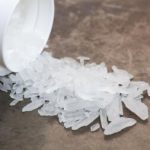Is There a Relationship Between Methamphetamine Use and the Rise in Domestic Violence
It seems we hear daily in the media about the growing threats that domestic violence, and the widespread use of methamphetamine have on our society. As criminal lawyers, we see first hand on a daily basis the death and destruction that the two “epidemics” have on individuals, and their families.
Whilst it is difficult to find any statistics or data linking the growth of domestic violence related incidents, and the growing use of “ice”, could it be that the two are related?
The Australian Crime Commission released a landmark report on the drug prompting federal Justice Minister Michael Keenan to describe it as “mind-eating, personality-distorting, life-ending”.
“There is strong link between methamphetamine use and family violence and we have seen the impacts of that in Canberra in the last couple of weeks,” Directions ACT chief executive Fiona Trevelyan said.
Girlfriends, spouses, children, parents, the rich and the poor; no one is immune to the violence that results from methamphetamine use and ice addiction. In April of 2013 Mehmet Torun accidentally shot his girlfriend Kara Doyle, 24, with a sawn off shotgun less than a metre away while on an ice bender. Torun had a history of domestic violence fuelled by his addiction to methamphetamines.
Nicole Miller, mother of three, was sitting in the passenger seat of her boyfriend, David Hopkins’ car at a petrol station when he stabbed her in the neck and then doused her with fuel and set her on fire. She lay on the ground engulfed in flames while Hopkins brandished a knife holding off horrified onlookers. Hopkins was in a drug-fueled rage when he launched the unprovoked attack” in 2011.
High on ice, Kelvin Willmott stabbed Shane Curphey in the head and neck more than 100 times with two large serrated steak knives as his mother stood witness to the entire frenzied attack.
Kara Doyle, Nicole Miller and Shane Curphey are just three of thousands of domestic violence cases each year that are directly linked to Australia’s ice pandemic.
In a SBS News article on the link between ice and family violence, NSW Police Commissioner Andrew Scipione “blames ice for the weekly domestic violence report he’s been receiving” and has called for “mandatory jail minimums for dealers and makers.”
Why are methamphetamine users prone to violence?
According to Dr. John Herron chairman of Australian National Council on Drugs (ANCD), “almost one in ten Australians have tried methamphetamines” and there are now an “estimated 73,000 dependent methamphetamine users in Australia.”
Methamphetamine is a highly addictive drug. According to a report by the Australian Crime Commission, short-term effects of its use may include sweating, headaches, insomnia, anxiety and paranoia. High doses can result in blurred vision, hallucinations, tremors and stroke.
Psychological and emotional effects of long-term methamphetamine use include depression, impaired memory and concentration, deficits in motor skills, as well as more long-term and serious psychological issues that lead to violent attacks and vicious domestic assaults against those around them.
In an article in the Sydney Morning Herald, Associate Professor Nicole Lee, of the National Centre for Education and Training on Addiction at Flinders University, says ice releases 1000 times higher than normal levels of the pleasure chemical, dopamine in the brain, which can result in a variety of psychological concerns including a transient psychosis.
Methamphetamines also increase serotonin, a neurotransmitter that not only regulates sleep, mood and appetite. But also activates the ‘fight or flight’ system, causing the release of noradrenaline. This she highlights can make people “anxious, suspicious and jumpy, and increase the risk of aggression and getting into fights.” As a result, ice users are more likely to demonstrate violent behaviour and aggression towards others including domestic violence and sexual assaults.
Ice users also normally stay up for days with very little to no food. This lack of sleep and sustenance help to exacerbate the psychological effects of ice resulting in severe mood swings, paranoia, delusions, and/or suicidal, homicidal or hallucinatory behaviors. This suspicion and paranoia then triggers violent episodes where the user lashes out and attacks those around them including children and loved ones.
The Narconon.org mentions one study, in which “half of the ice users investigated had shown psychotic, hostile or aggressive behavior in the prior year.
How can we stop methamphetamine related domestic violence?
Australia is one of the world leaders when it comes to the price of Crystal methamphetamine. The high demand due to Australia’s recent economic growth and massive profit potential for organised criminals has helped to fuel the rise in methamphetamine use in our country. This increase in use has resulted in an increase in domestic violence as well.
Dr. Herron says “providing effective treatment” is critical to addressing the problem and that “recent estimates show that less than a third of dependent methamphetamine users actually receive treatment.”
Critics also say that more money needs to be spent on treatment for drug dependence because addicts face huge waiting lists for treatment and often only get treated during episodes of drug-induced psychosis and are not treated for their actual drug dependence.
Tony Trimingham, the CEO of Family Drug Support, says the biggest concern with methamphetamine use and ice addiction is “aggression and violent behavior, which is why the Australian government needs to as Dr. Herron suggests, “invest more in our treatment system, maintain our public health programs and continue to support efforts to reduce the supply of the drug.”
He also recommends using existing police programs such as the drug testing for drivers, ensuring clinical and psychological support in drug treatment centres and encouraging well researched media campaigns and “galvanising our educational efforts,” if we are truly going to make even a dent in this war against Australia’s methamphetamine pandemic and the domestic violence that is associated with it.
Are Mandatory Minimum Sentences the Solution?
Police Commissioner Andrew Scipione has recently suggested stronger penalties for ice dealers and manufacturers, stating that there was a direct link between the “ice scourge” and the increase in domestic violence.
Comparing the widespread impact of the lethal drug to the threat of terrorist weapons, Mr Scipione described ice as a “drug of mass destruction”.
He said the scale of the problem was so large that he believed the state government should consider mandatory minimum sentences for both dealers and manufacturers.







